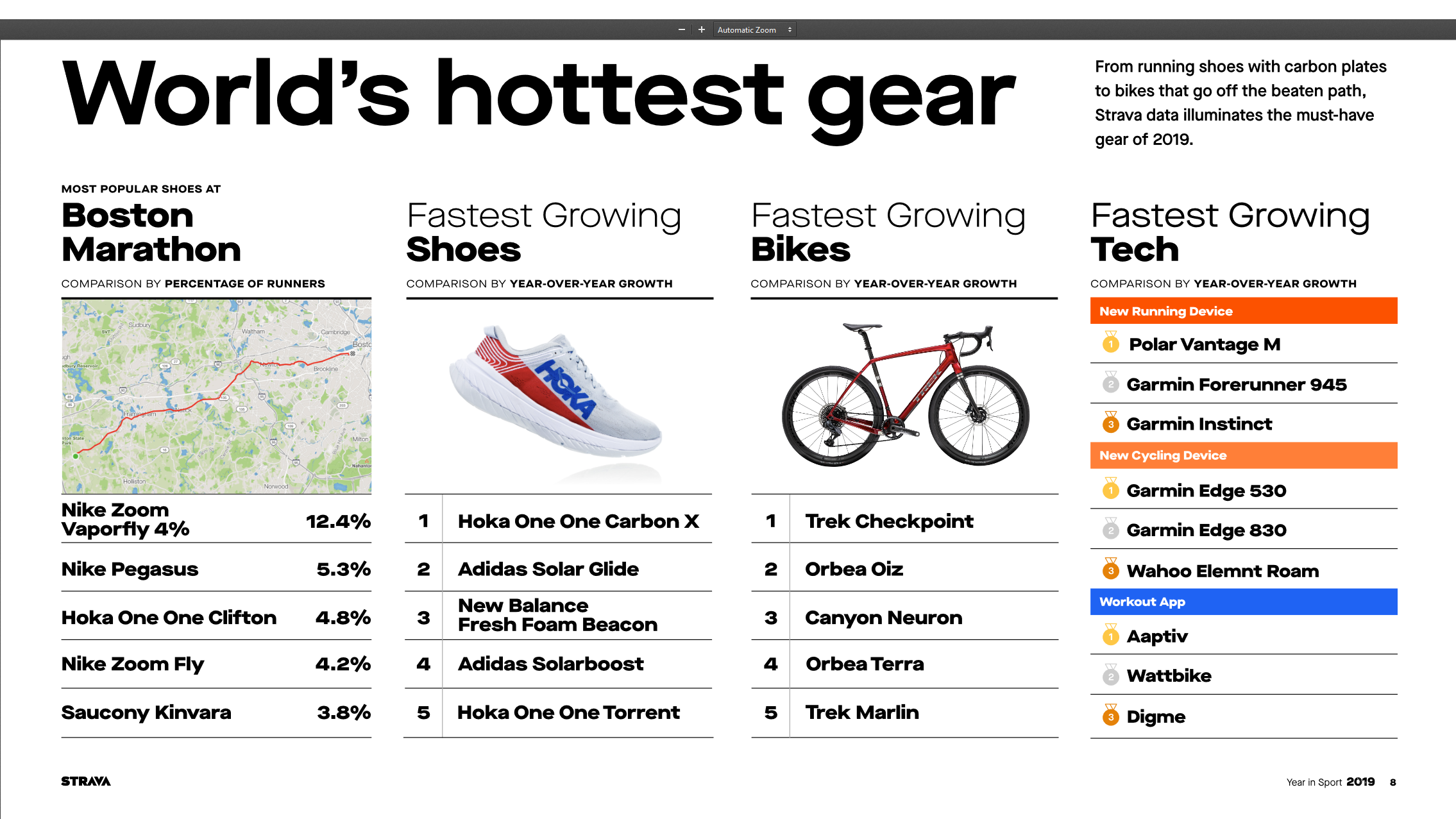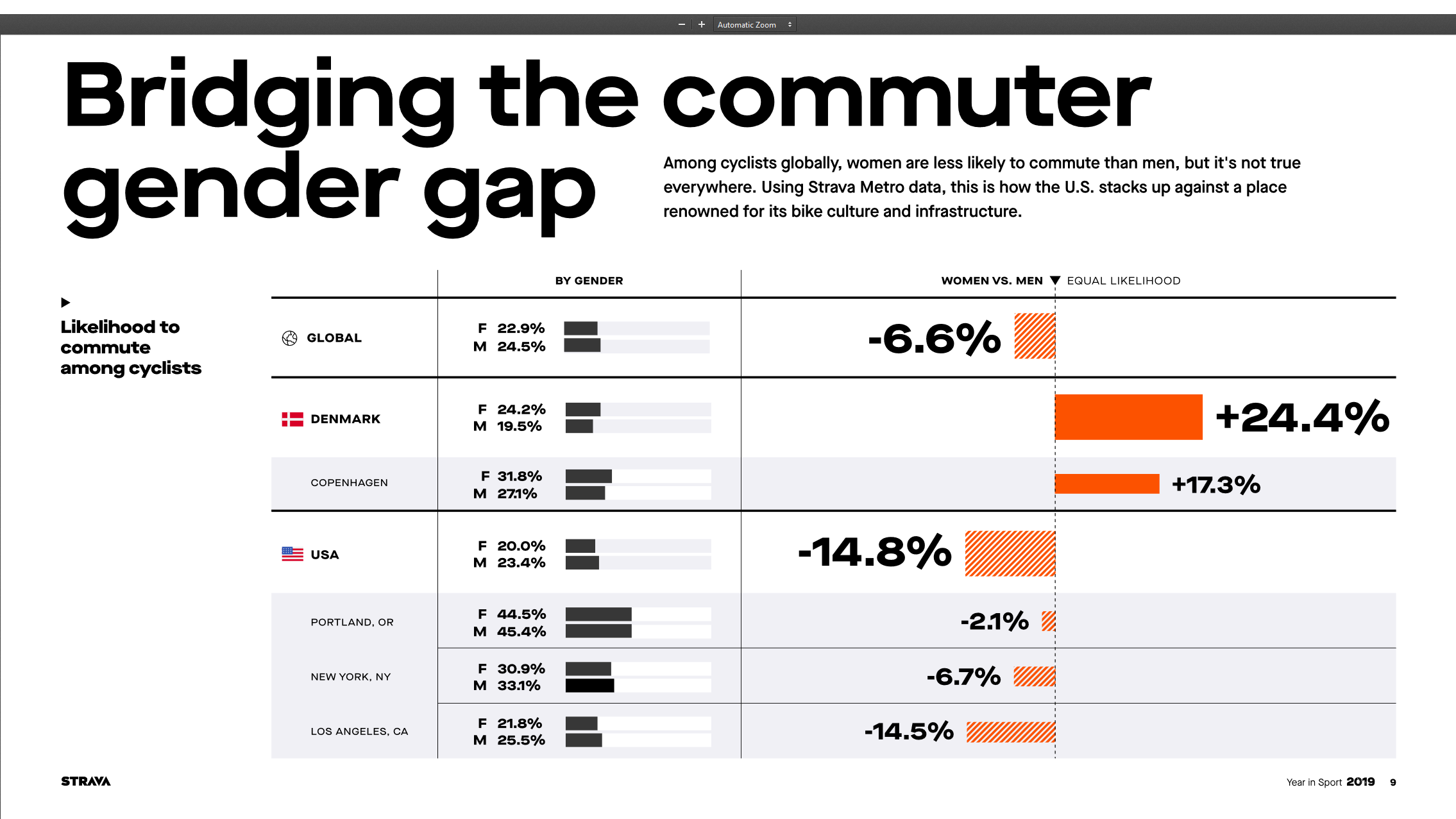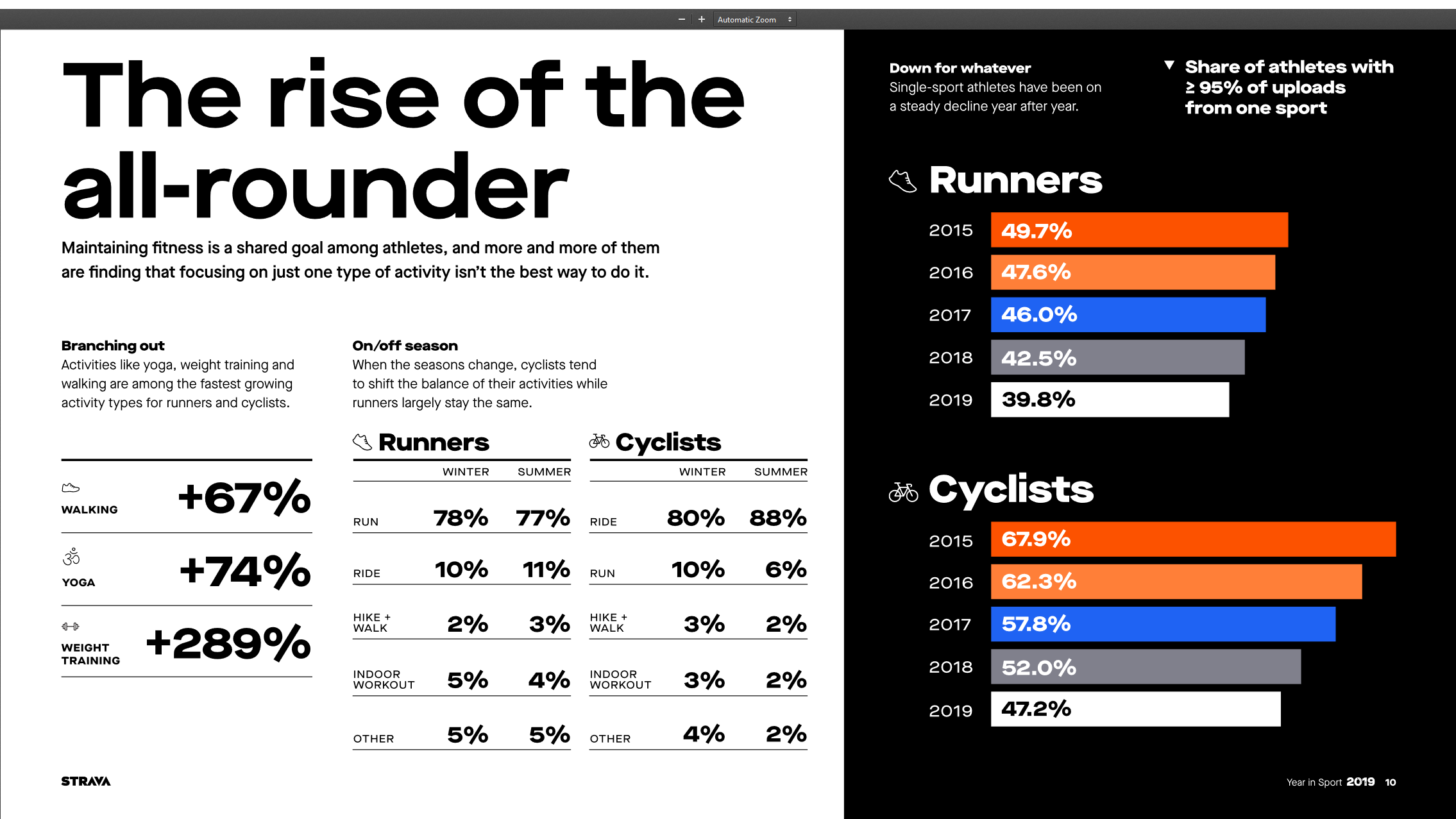What Strava’s End-of-Year Report Says About Where Cycling is Going

As 2019 draws to a close, end-of-year data is beginning to roll out. Turn on your Spotify Wrapped and let’s take a quick look at Strava’s Year in Sport.
With close to 50 million athletes uploading 19 million activities a week, Strava has a lot of data to pull from. That data has a lot to say about where cycling is headed.
Indoor Cycling is Growing Like Crazy
The share of riders uploading virtual rides continues to grow quickly and riders are riding indoors year round. Not suprising given the continual rise of apps like Zwift and TrainerRoad, but interesting none-the-less. In 2015-16, just 0.2% of summer rides were virtual. In 2018-19, this has grown to 4.9%. That’s a big shift.
Strava’s report also notes that riding Alpe d’Huez virtually improves your time IRL. Two runs on Alpe du Zwift will carry over to one minute off your real-world time; five practice runs can net you a two minute saving. Whether this is due to the increased training of riding it virtually or familiarity with the climb or some combination of the two isn’t specified.
The Fastest Growing Bike is a Gravel Bike
Strava tracks what bike you used when you upload an activity, granted you’ve entered/updated your gear. I was surprised to see the fastest growing bikes list be dominated by off-road rigs. The Trek Checkpoint gravel bike leads the list, followed by Orbea’s Oiz cross country MTB, the Canyon Neuron trail MTB, the Orbea Terra gravel bike and Trek’s Marlin trail MTB.
The list of devices used to record rides is interesting as well. For cycling, the Garmin Edge 530 is followed by the Edge 830 and Wahoo Elemnt Roam.
The Bike Commuter Gender Divide
Strava’s data isn’t just used by athletes, it can also be used for advocacy and transportation planning via the Strava Metro service.
Globally, the likelihood to commute among male cyclists is 6.6% higher than female cyclists, in the US it’s 14.8%.
Why do we care?
The percentage of female bicycle commuters is a metric used by city and transportation planners to determine how safe and healthy a riding environment is. Female cyclist are more risk-averse so a higher percentage of women choosing not to commute by bike indicates that riding in that area is unsafe.
Cross Training (especially Weight Lifting) is on the Rise
Athletes are spending a greater share of their time doing activities outside of their chosen sport. Cyclists especially are shifting their activities in the off-season and everyone is lifting weights.









